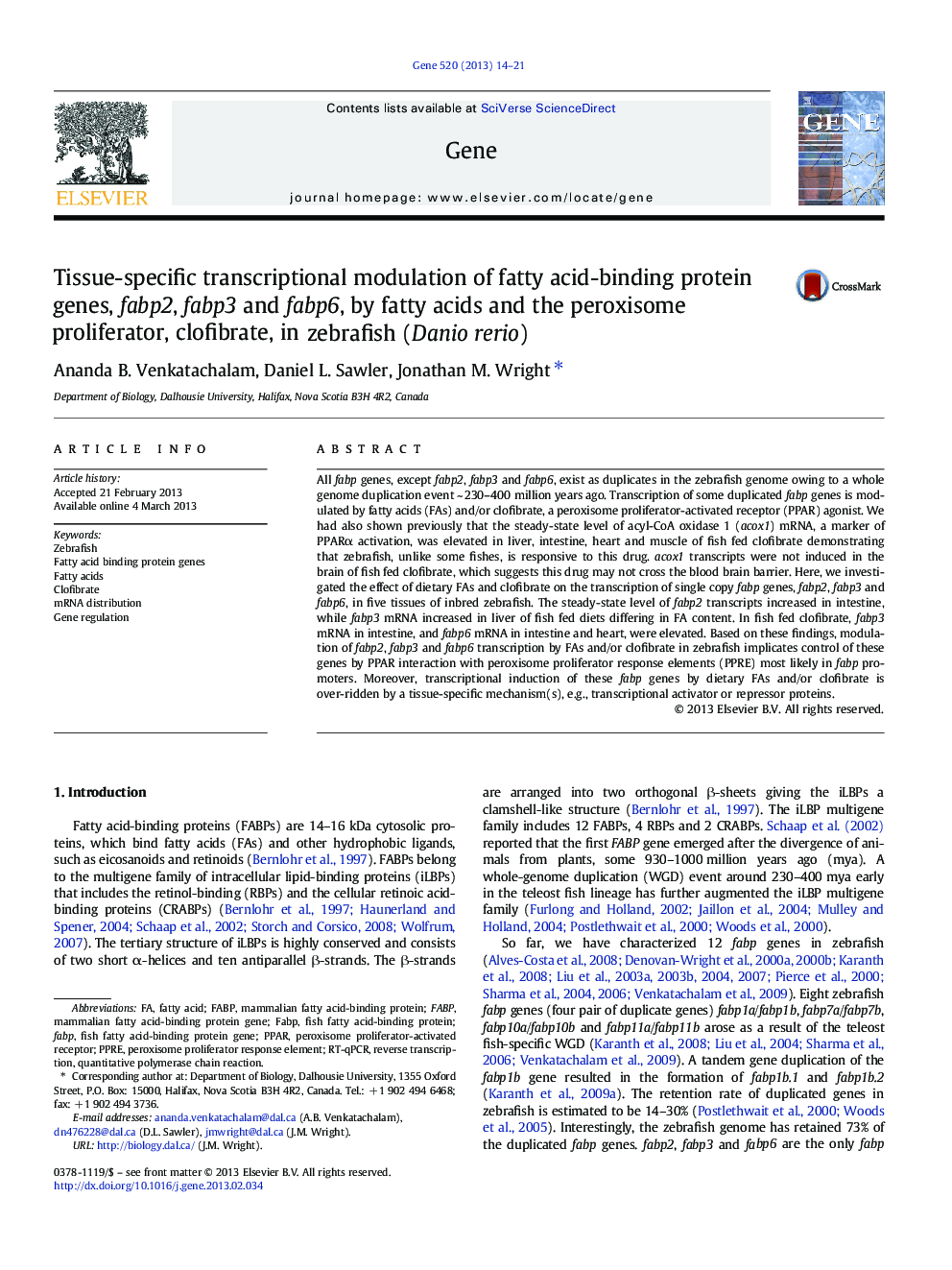| Article ID | Journal | Published Year | Pages | File Type |
|---|---|---|---|---|
| 2817288 | Gene | 2013 | 8 Pages |
•Transcriptional modulation of single copy fabp genes by FAs and clofibrate•Increase in steady-state levels of transcripts for fabp2 and fabp3 by FAs•Increase in steady-state levels of transcripts for fabp3 and fabp6 by clofibrate
All fabp genes, except fabp2, fabp3 and fabp6, exist as duplicates in the zebrafish genome owing to a whole genome duplication event ~ 230–400 million years ago. Transcription of some duplicated fabp genes is modulated by fatty acids (FAs) and/or clofibrate, a peroxisome proliferator-activated receptor (PPAR) agonist. We had also shown previously that the steady-state level of acyl-CoA oxidase 1 (acox1) mRNA, a marker of PPARα activation, was elevated in liver, intestine, heart and muscle of fish fed clofibrate demonstrating that zebrafish, unlike some fishes, is responsive to this drug. acox1 transcripts were not induced in the brain of fish fed clofibrate, which suggests this drug may not cross the blood brain barrier. Here, we investigated the effect of dietary FAs and clofibrate on the transcription of single copy fabp genes, fabp2, fabp3 and fabp6, in five tissues of inbred zebrafish. The steady-state level of fabp2 transcripts increased in intestine, while fabp3 mRNA increased in liver of fish fed diets differing in FA content. In fish fed clofibrate, fabp3 mRNA in intestine, and fabp6 mRNA in intestine and heart, were elevated. Based on these findings, modulation of fabp2, fabp3 and fabp6 transcription by FAs and/or clofibrate in zebrafish implicates control of these genes by PPAR interaction with peroxisome proliferator response elements (PPRE) most likely in fabp promoters. Moreover, transcriptional induction of these fabp genes by dietary FAs and/or clofibrate is over-ridden by a tissue-specific mechanism(s), e.g., transcriptional activator or repressor proteins.
